Thunderbolt on Windows Part 2: Intel's DZ77RE-K75 & ASUS' P8Z77-V Premium
by Anand Lal Shimpi on June 3, 2012 2:08 AM EST- Posted in
- Motherboards
- CPUs
- Intel
- Asus
- Thunderbolt
- Ivy Bridge
- Chipsets
Hot Plug & Promise Pegasus, Now Supported Under Windows
For the past year, hot plug of Thunderbolt devices hasn't been supported under Windows—even on a Mac running Boot Camp. Any Thunderbolt device had to be present at POST for it to appear under Windows. In order to have a certified motherboard, BIOS/UEFI workarounds have to be present to allow for Thunderbolt hot plugging under Windows.
With a certified motherboard and a Windows certified Thunderbolt device, hot plug does work as you'd expect it to.

Promise provided us with a beta driver and firmware update that allowed us to use the Pegasus R6 under Windows. Hot plugging worked just fine.
The Promise Pegasus utility under Windows is actually a web based interface, but it provides the same basic functionality as the equivalent OS X application.
What happens if you don't have a certified driver? One of three things can happen. The device will either not work at all, it will compromise stability, or it will work but with some issues. The LaCie Little Big Disk is the perfect example of the last option. I just got a beta certified driver, but prior to receiving it this is what would happen when I plugged it into a running Windows system:
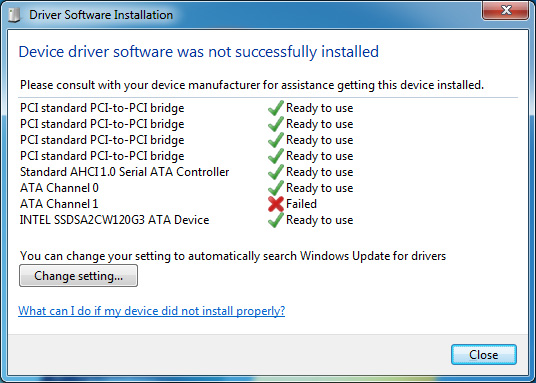
Only one of the two internal SATA channels was detected, meaning only one of the two internal drives was accessible. A reboot fixed this however.
The Elgato Thunderbolt SSD and Seagate's 2.5" GoFlex Thunderbolt adapter both use a different (lower power) SATA controller in order to stay below the 10W limit for a bus powered device (the cable, SATA and pre-Cactus Ridge Thunderbolt controllers combined already eat up around 5W).
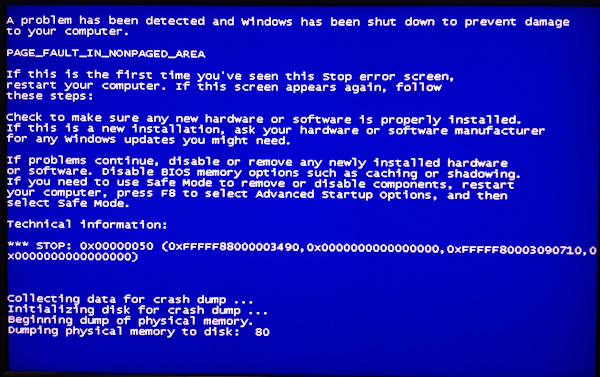
Unfortunately the ASMedia controller in these devices doesn't work well without a certified driver. Simply attaching the Elgato drive to a running Windows PC can cause a BSOD. Neither drive would even show up on either of the motherboards I tested; we'll simply have to wait for a certified driver here.
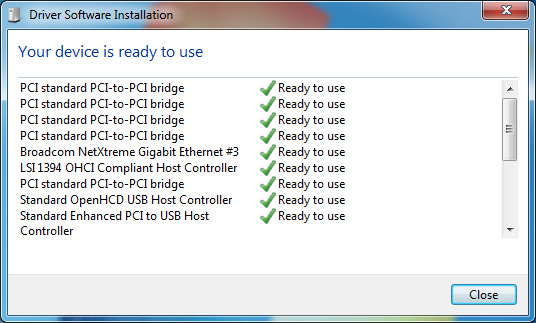
Apple's Thunderbolt Display works but not without a bunch of caveats. First you'll need access to a Mac to extract the drivers for the integrated components in the display (Firewire 800, GigE, etc.). Audio will work but only if you don't have a discrete GPU plugged into the motherboard. Firewire 800 and GigE both work. The integrated USB hub on the other hand basically doesn't work under Windows. Apple doesn't officially support the Thunderbolt Display under Windows and Intel won't certify it without Apple's support so anyone wanting to use a Thunderbolt display will just have to wait for someone else to release a similar product.
Remember the weird audio frame dropping issue I encountered under OS X with the Pegasus and Thunderbolt Display? I also encounter a similar but less severe version of that under Windows. While writing to the Pegasus and playing music through the Thunderbolt Display's speakers I get dropped audio frames, but unlike under OS X the music continues to play and is mostly recognizable—it just sounds like there's a little bit of static in the background. It's interesting that the problem exists under both OSes, but with slightly different behavior.


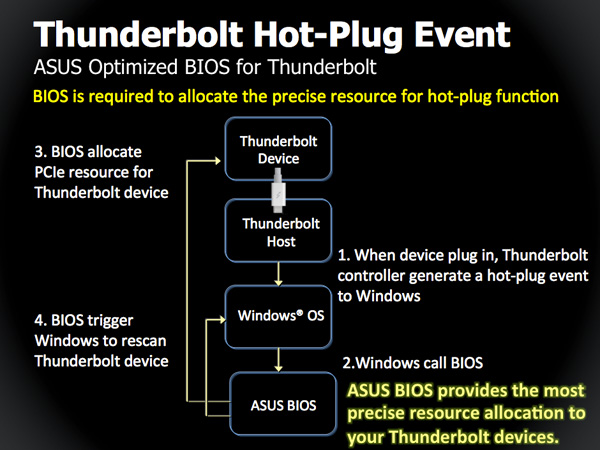
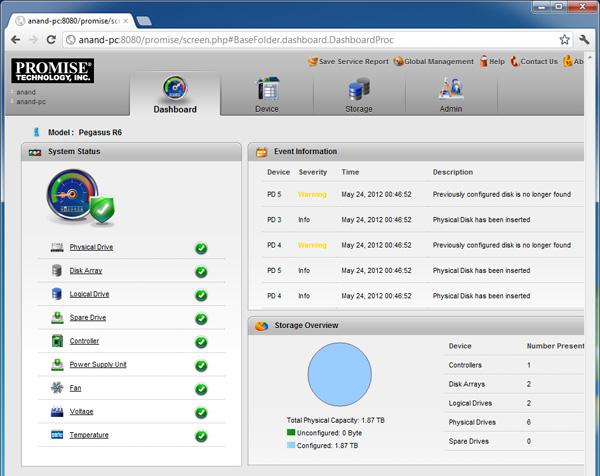














116 Comments
View All Comments
S3anister - Friday, June 8, 2012 - link
Most people have trouble making out text, yes. However, the problem does not lie with a high resolution. It's the fault of OS developers and website developers not coding for anything other than these low-res displays.S3anister - Friday, June 8, 2012 - link
You're the kind of person that said "Oh we don't need SATA my IDE drives are perfectly fine."Imagine how sweet it would be to rock a SSD on a retro IDE interface! Full-on 133, baby. Serious bandwidth.
MobiusStrip - Thursday, June 14, 2012 - link
HDMI was designed for raster-based displays. Yep, CRTs.WTF is the matter with people cheerleading AGAINST better technology?
USB is wholly unsuited to the demands of high-throughput applications like external storage and video, but you still see noobs trying to pit it against Thunderbolt. It's like they learned nothing from Firewire.
ananduser - Monday, June 4, 2012 - link
Apple "pushing" what? Apple didn't push anything, absolutely anything related to TB. Every other OEM would've have the TB interface built in from the start if Intel treated TB like USB, and that is in indiscriminate fashion. OEMs didn't built it in because they were NOT ALLOWED to do so not because it was an impediment. Apple having TB built in has nothing to do with propagating TB and has everything to do with Apple getting its marketing dollars' worth out of TB and bang the "exclusivity" factor of their macs.No sooner than you cross over the pond(if you're US) mac awareness plummets. What about TB awareness ? There is no such thing.
repoman27 - Monday, June 4, 2012 - link
Apple pushed a pile of cash in Intel's direction. They agreed to buy 20 million Thunderbolt controllers in the first 12 months that Intel was shipping them in exchange for exclusivity. I'd wager that cost them more than a quarter billion dollars for the privilege.This also ensured that 5% of PCs shipped globally included Thunderbolt in its first year of existence. I doubt any other OEM would have made that kind of gamble on a nascent technology such as Thunderbolt. I also doubt that Intel could have produced substantially more Thunderbolt controllers than they already did in 2011.
CeriseCogburn - Monday, June 4, 2012 - link
A bunch of head and pocketbook in the clouds nerds can have their neck beard tickled fancy while they do their elite e dance. It's wonderful. They can look toward the sky while they drool out how dreamy the new tech is.CeriseCogburn - Tuesday, June 5, 2012 - link
APPL didn't push it along it hogged it for itself for a whole year so it's insane fanboy base could go goggle eyed and stupid with exclusive world wide only ME handling.Duh.
MobiusStrip - Thursday, June 14, 2012 - link
"Firewire found its niche in high end A/V equipment."And this kind of comment is bogus. High end? Firewire was REQUIRED on pretty much every CONSUMER video camera from the mid-90s well into the '00s. Firewire was the only way to get video off a DV camera.
ggathagan - Sunday, June 3, 2012 - link
TB *IS* superior to USB3.If nothing else, compare USB3's bandwidth of 5 Gbps to TB's bandwidth of 20 Gbps in each direction.
That said, I think many misunderstand ThunderBolt.
It's not a device in-and-of-itself, it's a flexible I/O bus mechanism that's fairly protocol-independent.
So you can use it for FW400/800, USB 3, DP, or Ethernet.
Given that the one-year agreement just ended and PC motherboard are just now beginning to implement TB, your portent of doom is a little premature.
As with any new technology, prices drop as the technology develops and is adopted.
Intel started shipping the 2nd gen TB controllers in April and the design of the Cactus Ridge controller reduces the cost of implementing TB compared to the 1st gen.
Alexvrb - Sunday, June 3, 2012 - link
Yeah except it's an entirely proprietary interface, controlled solely by Intel, and they gave Apple an entire year of exclusivity. I'll be avoiding Thunderbolt like the plague.